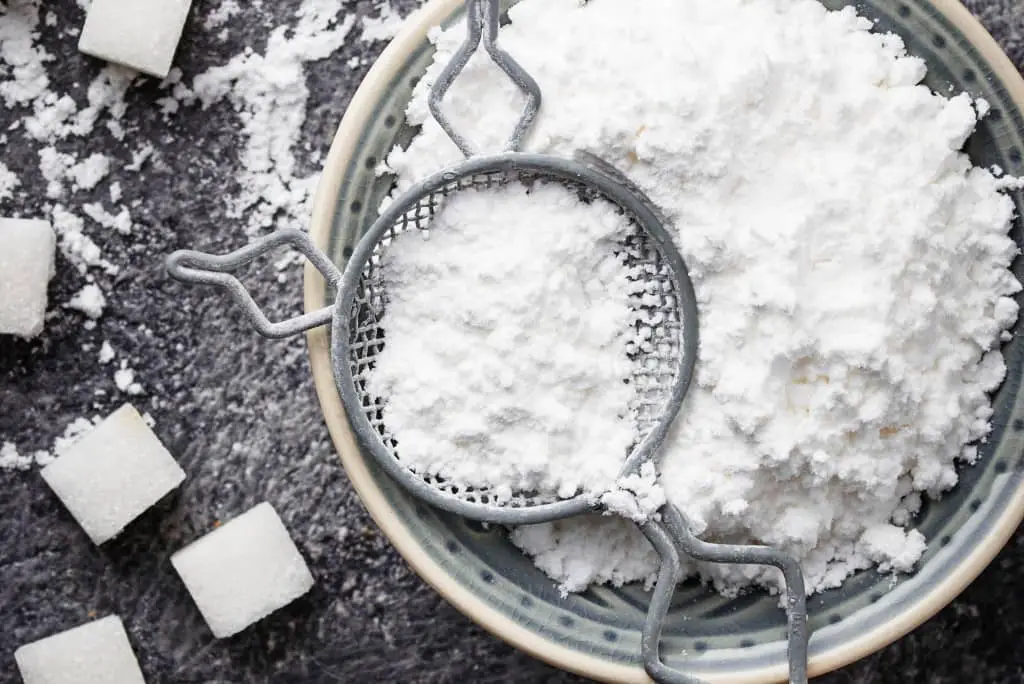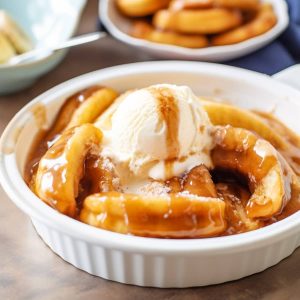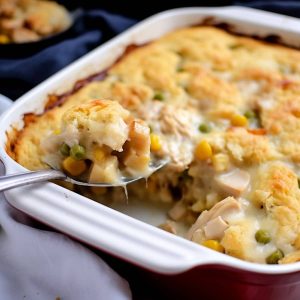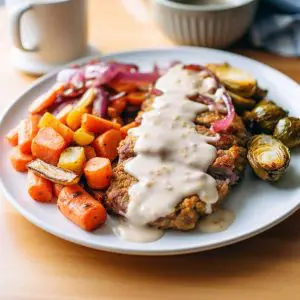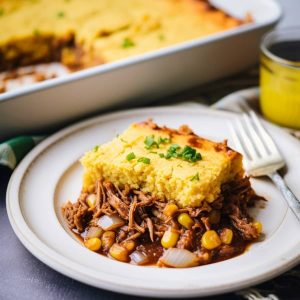As a baker and lover of sweets, powdered sugar has always been in my pantry. It was one of the first things I remember using while baking with my Grandmother. Also known as confectioner’s sugar or icing sugar, it’s a type of sugar that’s finely ground and has an incredibly fine texture. In fact, it is ground to a varying fineness in relation to granulated sugar; this is where you may hear it referred to as 10x sugar. Powdered sugar is very commonly used in baking, as well as other foods or components such as frosting, glazes, and fillings. I love how it gives desserts a smooth texture that’s easy to spread, its really unmatched at this. It would be hard to bake with out it, as it’s the perfect finishing touch to many Southern-style treats I make.
In Southern American cooking, powdered sugar is used in a variety of desserts and baked goods. It’s often used to dust cakes, cookies, doughnuts, and more before serving them, adding a touch of sweetness and a beautiful finish. Don’t overlook the visual impact of using just a bit of powdered sugar to top off that baking! I also love using powdered sugar in pies, cobblers, and crisps, where it can add an extra layer of sweetness and enhance the flavor of the fruit. So, let’s dive into the wonderful world of powdered sugar and discover all its uses and substitutes!
What is Powdered Sugar?
Powdered sugar, also known as confectioner’s sugar or icing sugar, is a type of sugar that has been ground into a fine powder. This makes it perfect for use in baking and cake decorating, as well as some other uses in the kitchen. My favorite is simply using it to top off baking to give it that amazing dusted and delicious look that only powdered sugar can do!
To make powdered sugar, granulated sugar is ground into a fine powder and mixed with a small amount of cornstarch to prevent clumping. The cornstarch is also added to help stabilize the powdered sugar and prevent it from absorbing moisture.
Powdered sugar is available in different levels of fineness, referred to as “10x,” “6x,” or “4x.” The numbers refer to how many times the sugar has been milled, with 10x being the finest and most commonly used for baking and decorating. I personally only have 4x and 10x in my pantry and I find that the 10x is perfect for most baking needs.
One of the best qualities of powdered sugar is its ability to dissolve quickly, which makes it ideal for making frosting and other types of glazes. And since it’s so finely ground, it blends easily into batters and doughs without leaving any gritty texture behind.
In baking, powdered sugar is often used in recipes for cookies, cakes, and other desserts to add sweetness and texture. It’s also commonly used to decorate cakes and cupcakes, either by dusting it over the top or by mixing it with a small amount of water or milk to make a smooth glaze. When dusting, I prefer to use the grittier 4x type. It gives a stunning snow-like dusting that’s just amazing!
How to Use Powdered Sugar in Southern Baking
Using powdered sugar in your baking is a great way to add a touch of sweetness and texture to your favorite desserts. As I mentioned above, one of the most common ways I use it is as a dusting for baked goods like cakes, cookies, and donuts. After they have cooled down, simply sprinkle powdered sugar on top to add a touch of sweetness and to make them look extra-amazing! Just a perfect finishing touch that is so easy to do.
Another great use of powdered sugar in Southern baking is in frosting and glazes. This is where its hard to beat its ability to dissolve completely, leaving amazing creamy consistency. Powdered sugar can be combined with butter, cream cheese, milk, and other ingredients to create a smooth and sweet frosting that’s perfect for all sorts of treats. For glazes, simply mix powdered sugar with a small amount of liquid (such as milk or lemon juice) to create a sweet, thin sauce that can be drizzled over cakes and pastries.
Of course, you can use it for simply sweetening desserts as well. I use it to sweeten fillings for pies, cobblers, and crisps. Mix it with your favorite fruits and spices to create a delicious and sweet filling that’s sure to impress. Just don’t forget to dust the top of your pies and cobblers with a little powdered sugar for that extra touch.
What does Powdered Sugar Taste Like?
When it comes to describing the taste of powdered sugar, it’s all about sweetness. Of course, the sweetness level will depend on how much of it is used in a recipe. But in general, powdered sugar has a milder and more delicate sweetness than granulated sugar due to its fine texture. It dissolves quickly in liquids and blends easily with other ingredients, which why it makes a perfect choice for baked goods that need that silky-smooth texture.
Personally, I find that powdered sugar has a clean and slightly creamy flavor that pairs well with other sweet flavors. It’s not overpowering or too sweet. This makes it easy to work with and great for frosting and glazes, as it won’t overpower the flavor of the dessert itself. It’s important to note that some brands of powdered sugar have small amounts of cornstarch added to prevent clumping. If you are using powdered sugar for a recipe where a very specific consistency is needed, choose a brand that doesn’t have any added cornstarch. Simply check the back of the packaging, it will be included in the ingredients.
The Best Substitutes for Powdered Sugar
When it comes to baking, having the right ingredients is essential. But what happens when you run out of powdered sugar and need a substitute? Don’t worry, there are a few alternatives that can work just as well.
- Granulated Sugar: This is your best option if you’ve run out of powdered sugar. Add granulated sugar into a blender or food processor and blend until it becomes a fine powder. I’ve found that adding cornstarch helps to smooth out the blend. I use 1/2 tsp of cornstarch to 1 cup of granulated sugar. Once blended, measure out same amount of your prepared powdered sugar that your recipe calls for. Use a sifter to remove larger chunks of sugar if you need a very specific texture.
- Confectioner’s Sugar: Got you! This is actually another name for powdered sugar, so it may not be the best substitute if you’re out of it. However, if you have a recipe that calls for confectioner’s sugar and you only have granulated sugar, you can use the method above to turn granulated sugar into a fine powder.
- Cornstarch: This may seem like an unlikely substitute, but cornstarch can be used in a pinch. Mix one cup of granulated sugar with one tablespoon of cornstarch in a blender or food processor and blend until it becomes a fine powder. Use the same amount of powdered sugar that your recipe requires.
- Maple Syrup Powder: This ones interesting, and I haven’t tried it yet myself. Maple syrup powder is made by dehydrating maple syrup and grinding it into a fine powder. Apparently you may use the same amount of maple syrup powder as powdered sugar in your recipe, but keep in mind that it will add a maple flavor to your recipe. Maybe not a bad thing!
- Stevia: If you’re looking for a sugar-free substitute, stevia is a good option. It’s a natural sweetener made from the leaves of the stevia rebaudiana plant. This method is same as granulated sugar, except you will use 3/4 cup of the stevia sweetener and 1 tbsp of cornstarch. Blend together in a food processor until perfectly powdered. Keep in mind that stevia is much sweeter than sugar, so you’ll need to adjust the amount you use. Also, stevia will have a different consistency than traditional powdered sugar. Try it out!

